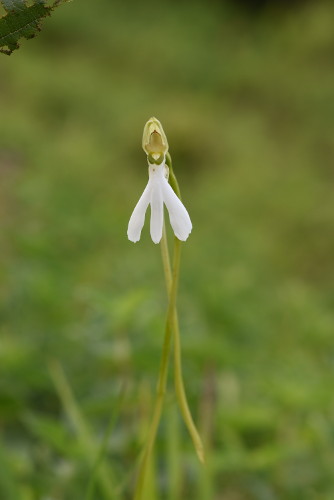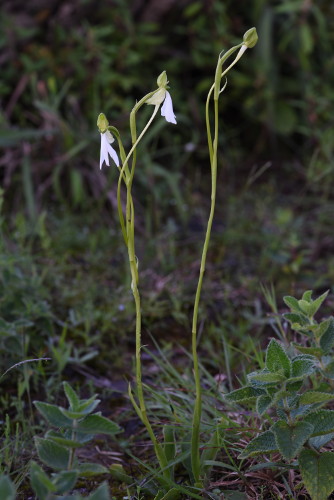Species of the Month – October 2015
Habenaria longicorniculata J.Graham
The genus Habenaria Willd., belonging to Orchidoideae subfamily of the plant family Orchidaceae, takes the name from Latin for rein or strap referring to the strap like spur. This genus of terrestrial orchids is one of the genera having largest number of species.
Habenaria longicorniculata J.Graham
syn Habenaria longicalcarata A.Rich.

This white flowered terrestrial orchid usually blooms in the months of August-September (at times continues to flower in October), with the plant with inflorescence usually growing up to the height of 40-50cm. This species has one of the longest spurs in the plants seen in Western Ghats. It is usually 12-15cm long.
The inflorescence usually bears one to two flowers, two flowers being the most commonly seen phenomenon. Occasionally one will come across inflorescence with three flowers as well. The sepal has green colour where is the lip or labellum is pure white. Flowers usually last few days weeks once they open.
The typical habitat to find this is grassy slopes. The leaves, usually 3-4 in number, appear before the flowering. The plant stays dormant till then surviving on its tubers underground. The plant survives/multiplies both vegitatively (developing new tubers every season and new shoots sprouting out) and through the seed dispersal from the pollinated flowers.
Although this is one of the commonly seen terrestrial orchid in open grassy slopes of the forest, habitat destruction, grazing are the few of many threats this and other terrestrial orchids face. Change in rainfall also seem to play major role in flowering and plant growth.
 Along with other lesser popular ground orchids, this species in not commonly found in cultivation. Perhaps lack of adequate knowledge of soil and growing conditions and having not big and showy flowers have made this orchid less popular among growers. However with regular observation it can be seen that the presence and good population of such terrestrial orchids can reveal a lot of the climatic conditions of the habitat where they are growing.
Along with other lesser popular ground orchids, this species in not commonly found in cultivation. Perhaps lack of adequate knowledge of soil and growing conditions and having not big and showy flowers have made this orchid less popular among growers. However with regular observation it can be seen that the presence and good population of such terrestrial orchids can reveal a lot of the climatic conditions of the habitat where they are growing.
References:
1. Introduction to Orchids ~ Abraham and Vatsala
2. Orchids of Nilgiris ~ Dr. J. Joseph